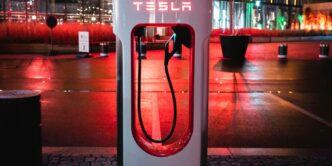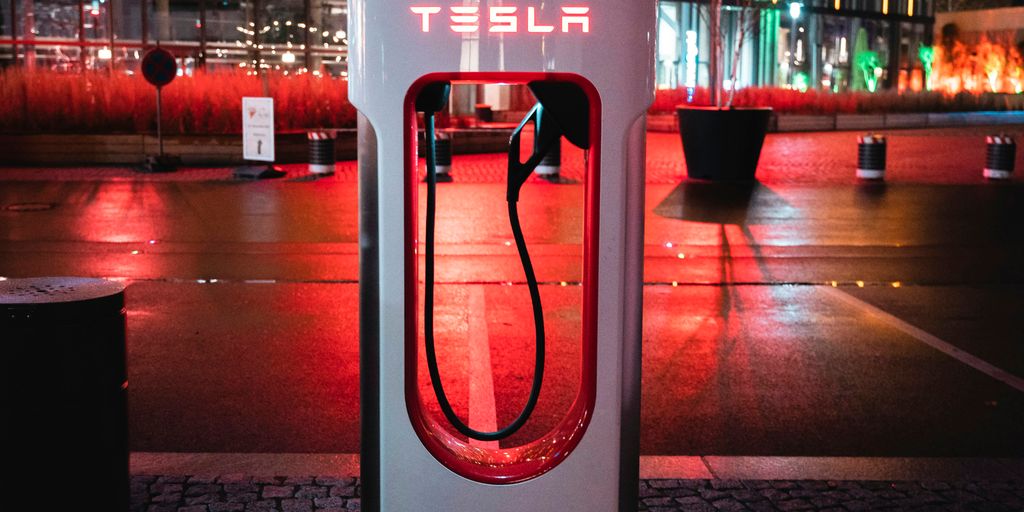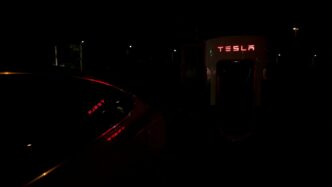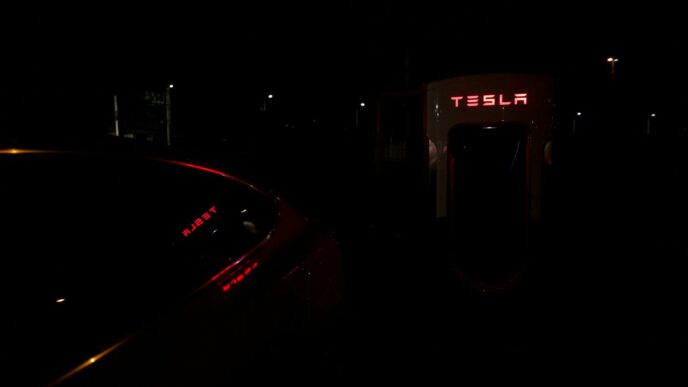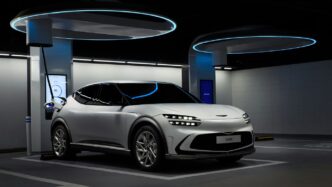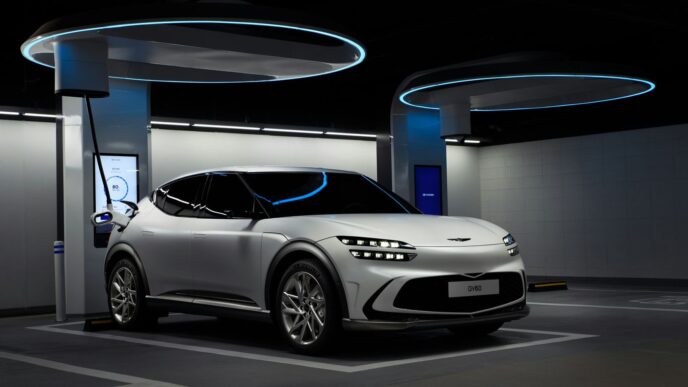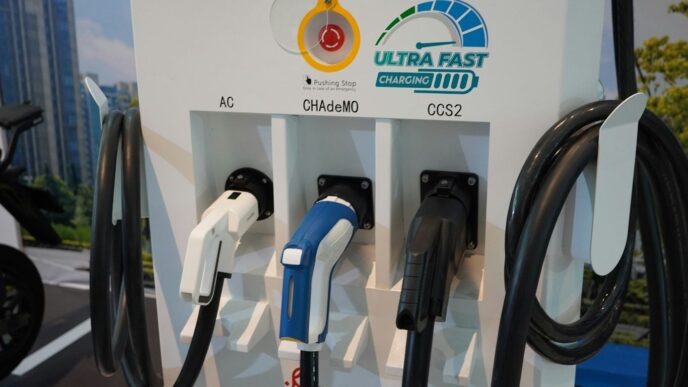Thinking about getting a Tesla in 2025? Awesome! But before you jump in, you might be wondering, “how much does it cost to charge a Tesla?” It’s a fair question, and the answer isn’t always super simple. This article will break down all the things that play into your charging bill, from where you plug in to the kind of Tesla you drive. We’ll also look at ways to keep those costs down and what the future might hold for EV charging. Let’s figure out what you can expect to pay to keep your Tesla running.
Key Takeaways
- Your Tesla’s charging cost depends a lot on where you charge it and when.
- Home charging, especially during off-peak hours, is usually the cheapest way to go.
- Public charging and Supercharging offer convenience but often cost more.
- The specific Tesla model you own affects costs due to different battery sizes and efficiencies.
- Smart charging habits and understanding electricity rates can help you save money.
Understanding Tesla Charging Costs in 2025

Factors Influencing Charging Expenses
Okay, so you wanna know how much it’ll really cost to keep your Tesla juiced up in 2025? It’s not as simple as just looking at the sticker price of electricity. Several things play a part. First, there’s the size of your Tesla’s battery. A bigger battery means more juice needed, obviously. Then, you’ve got to think about where you’re charging – at home, at a public station, or at a Supercharger. Each has its own pricing structure. And don’t forget about the time of day! Charging during peak hours can seriously inflate your bill. Finally, your driving habits matter. If you’re constantly flooring it, you’ll need to charge more often.
Calculating Your Tesla Charging Costs
Alright, let’s get down to brass tacks. How do you actually figure out how much you’re spending? It’s not rocket science, but you’ll need a few numbers. You’ll need to know your Tesla’s battery capacity (in kWh), the electricity rate in your area (dollars per kWh), and how efficient your charging is (usually around 85-90%). Keep in mind that electricity rates can vary wildly depending on where you live and the time of day. Some utility companies even offer special EV charging plans that can save you money.
The Basic Cost Formula for Charging
Here’s the formula you’ve been waiting for:
Total Cost = Battery Capacity (kWh) x Electricity Rate ($/kWh) x (1 / Charging Efficiency)
Let’s say your Tesla has a 75 kWh battery, your electricity rate is $0.15 per kWh, and your charging efficiency is 90%. The calculation would look like this:
Total Cost = 75 kWh x $0.15/kWh x (1 / 0.90) = $12.50
So, a full charge would cost you around $12.50. Remember, this is just an estimate. Real-world costs can vary, but this formula will give you a good starting point. Also, don’t forget to factor in potential fees at public charging stations. Some places charge by the minute, which can add up quickly if your car charges slowly.
Comparing Tesla Charging Methods
Home Charging Advantages
Home charging is super convenient. You just plug in your Tesla when you get home, and it’s ready to go in the morning. It’s often the cheapest way to charge, especially if you can take advantage of off-peak electricity rates.
- Convenience: Charge overnight while you sleep.
- Cost-Effective: Lower electricity rates during off-peak hours.
- Control: You manage your charging schedule.
If you’re looking for home charging solutions, there are many options available to make the process even easier.
Public Charging Considerations
Public charging is useful when you’re on the road or can’t charge at home. But, it can be more expensive than home charging. Plus, you have to factor in the time it takes to find a charger and wait for your turn.
- Availability: Public chargers are becoming more common, but they’re not everywhere yet.
- Cost: Public charging rates can vary a lot, so pay attention to the price per kWh.
- Time: Charging can take longer than filling up a gas tank, so plan accordingly.
Supercharging Network Impact
Tesla’s Supercharger network is designed for fast, long-distance travel. It’s more expensive than home charging, but it’s way faster than other public chargers. Superchargers are strategically placed along major highways to make road trips easier. The convenience of rapid recharging comes at a premium, but it can be worth it when you’re in a hurry.
- Speed: Superchargers can add a lot of miles in a short amount of time.
- Convenience: Located on major travel routes.
- Cost: More expensive than home or slower public charging.
Optimizing Home Charging for Your Tesla
Home charging is super convenient, but it can also impact your electricity bill. Let’s look at how to make it as efficient and cheap as possible.
Leveraging Off-Peak Electricity Rates
The key to saving money when charging at home is to take advantage of off-peak electricity rates. These rates are usually offered during the night, when overall demand is lower. Check with your local utility company to see if they offer time-of-use rates. If they do, you can save a lot of money by charging your Tesla during off-peak hours.
Here’s a quick example:
| Time of Day | Electricity Rate (per kWh) |
|---|---|
| Peak (2 PM – 7 PM) | $0.25 |
| Off-Peak (10 PM – 6 AM) | $0.10 |
As you can see, charging during off-peak hours can save you a significant amount of money. Tesla’s scheduled charging feature can help automate this process.
Benefits of Level 2 Chargers
While a standard wall outlet (Level 1 charging) can charge your Tesla, it’s incredibly slow. A Level 2 charger is much faster and more efficient. It uses a 240-volt outlet, similar to what your dryer or oven uses.
Here are some benefits of using a Level 2 charger:
- Faster charging times: A Level 2 charger can add up to 25-30 miles of range per hour, compared to the 3-5 miles you get with Level 1.
- Increased convenience: You can fully charge your Tesla overnight, so it’s ready to go in the morning.
- Potential cost savings: By charging faster, you can take full advantage of off-peak electricity rates.
Smart Charging Practices
Beyond off-peak rates and Level 2 chargers, there are other smart charging practices you can implement to minimize your electricity bill:
- Avoid charging to 100% every time. Keeping your battery between 20% and 90% can extend its lifespan.
- Use Tesla’s app to monitor your charging progress and adjust settings as needed.
- If you have solar panels, charge your Tesla during the day when your panels are generating excess electricity. This can significantly reduce your reliance on the grid and lower your charging costs.
The Role of Tesla Models in Charging Costs
It’s easy to think all Teslas are created equal when it comes to charging, but that’s far from the truth. Different models have different battery sizes, efficiencies, and even charging capabilities, all of which impact how much you’ll spend to keep them running. Let’s break it down.
Battery Capacity and Efficiency
The size of your Tesla’s battery directly affects how much it costs to charge. A larger battery, like the one in a Model S Long Range, will take more electricity to fill than the battery in a Model 3 Standard Range. However, it also gives you more range. Efficiency also plays a big role. Some models are more aerodynamic or have more efficient motors, meaning they can travel further on the same amount of electricity. This is usually measured in kWh per mile. A lower number is better.
Impact of Model 3 Specifications
The Model 3 is a popular choice, and its charging costs can vary depending on the specific version you own. The Standard Range, Long Range, and Performance models all have different battery capacities and performance characteristics. For example, charging a Long Range Tesla Model 3 using Level 2 public chargers in 2025 will cost between $12.78 and $18.90 for a full charge, with rates typically ranging from $0.20 to $0.30 per kWh. Here’s a quick comparison:
| Model 3 Variant | Battery Capacity (Approx.) | Estimated Range (2025) |
|---|---|---|
| Standard Range | 55 kWh | 272 miles |
| Long Range | 75 kWh | 353 miles |
| Performance | 75 kWh | 315 miles |
Keep in mind that these are estimates, and real-world range can vary based on driving conditions, weather, and other factors.
Long-Term Cost of Ownership
When considering the overall cost of owning a Tesla, it’s important to look beyond just the initial purchase price and charging costs. Factors like maintenance, tire replacements, and insurance also contribute to the total cost of ownership. However, electric vehicles generally have lower maintenance costs than gasoline cars because they have fewer moving parts and don’t require oil changes or other routine maintenance. Plus, you might be able to get some government incentives and tax credits to help offset the initial cost.
Minimizing Your Tesla Electricity Bill
Strategic Charging Habits
Okay, so you’ve got a Tesla. Awesome! But now you’re probably wondering how to keep that electricity bill from going through the roof. It’s all about being smart with when and how you charge. First, figure out when off-peak hours are in your area – usually late at night or early morning. Charging then can save you a bunch. Also, don’t always charge to 100% unless you really need the range. Keeping it between, say, 20% and 90% can actually help your battery last longer. Think of it like this:
- Charge during off-peak hours.
- Avoid charging to 100% regularly.
- Use scheduled charging features.
Battery Health and Longevity
Your Tesla’s battery is its heart, and keeping it healthy is key to saving money in the long run. Extreme temperatures are a no-no. Try to park in the shade during hot days and in a garage when it’s freezing. Also, avoid supercharging all the time. It’s convenient, sure, but it can put extra stress on the battery. Little things like this can make a big difference over the years. Here’s a quick rundown:
- Avoid extreme temperatures.
- Limit frequent supercharging.
- Keep software updated for optimal performance.
Regional Electricity Rate Variations
Electricity prices aren’t the same everywhere. What you pay in California might be totally different from what someone in Texas pays. Knowing your local rates is super important for figuring out your actual charging costs. Some areas even have special time-of-use rates specifically for EV owners. Check with your utility company to see if they offer any discounts or incentives for charging your Tesla. You might be surprised at how much you can save just by being aware of these differences. Here’s what to do:
- Research your local electricity rates.
- Check for EV-specific discounts.
- Consider switching to a time-of-use plan.
Tesla Supercharging: Speed Versus Cost
Understanding Supercharger Rates
Tesla’s Supercharger network is a big draw for owners, offering a way to quickly add range while on the road. But how much does it really cost? Supercharger rates can vary quite a bit depending on location, time of day, and even your Tesla model. It’s not a flat fee, so you’ll want to check the current rates in the Tesla app before plugging in. Keep in mind that these rates are often higher than what you’d pay at home, reflecting the convenience and speed of the service. Understanding these EV charging costs is key to budgeting for your travels.
Convenience of Rapid Recharging
The main advantage of Supercharging is speed. Instead of waiting hours for a full charge at home or at a public Level 2 charger, you can often get a significant boost in just 30-40 minutes. This is especially useful for long road trips where time is of the essence. The convenience factor comes at a price, though. You’re paying for the speed and the accessibility of the Supercharger network. Here’s a quick look at the typical Supercharging times:
- 5-80% Charge: ~30-40 minutes
- 200 miles of Range: ~20-30 minutes
- Full Charge (if needed): ~60-75 minutes
Long-Distance Travel Implications
For long-distance travel, Superchargers are almost a necessity. Planning your route around Supercharger locations is a common practice for Tesla owners. While the cost can add up, it’s often still cheaper than filling up a gasoline car, especially when you factor in the time saved. Plus, Tesla is opening its network to other manufacturers, which could impact availability and pricing in the future. Consider these points when planning a trip:
- Plan your route using the Tesla app to locate Superchargers.
- Factor in charging time when estimating your arrival.
- Be aware that Supercharger availability can vary, especially during peak travel times.
Future Trends in Tesla Charging
Anticipated Changes in Electricity Prices
Okay, so electricity prices are always a bit of a moving target, right? But looking ahead, there are a few things that could really shake things up for Tesla owners. For one, the push for renewable energy is only going to get stronger. As more solar and wind farms come online, we might see some downward pressure on prices overall, especially during sunny or windy days. However, the big question is how well the grid can handle all that intermittent power. If we don’t get better at storing energy (think bigger and better batteries for the grid), we could still see price spikes when demand is high and renewable sources aren’t producing enough. Also, keep an eye on government policies – tax credits and subsidies for renewable energy could definitely impact what you pay to charge your Tesla. It’s a bit of a gamble, but staying informed is key.
Advancements in Charging Technology
Charging tech is evolving fast. We’re talking about faster charging speeds, wireless charging, and even bidirectional charging, where your Tesla could potentially send power back to your home or the grid. Imagine plugging in when you get home and not only charging your car but also helping to power your house during peak hours! That could seriously cut down on your electricity bill. Plus, companies are working on new battery tech that could increase range and reduce charging times even further. It’s all pretty exciting, and it could make owning a Tesla even more convenient and affordable in the long run. For example, electric vehicle deployment is expected to increase significantly, driving innovation in charging solutions.
Government Incentives and Tax Credits
Don’t forget about Uncle Sam (and your state government, too!). Tax credits and rebates can make a huge difference in the overall cost of owning and charging a Tesla. Right now, there are still some federal tax credits available for buying EVs, and many states offer additional incentives for installing home chargers or using renewable energy. These programs can change, so it’s worth keeping an eye on what’s available in your area. A little research could save you a lot of money. Here’s a quick rundown of what to look for:
- Federal Tax Credit: Check the IRS website for the latest info.
- State Rebates: Your state’s energy office is the place to start.
- Local Utility Programs: Many utilities offer incentives for EV owners.
Conclusion
So, what’s the real deal with charging a Tesla in 2025? It’s not a simple, one-size-fits-all answer. Your costs will jump around based on where you live, how you charge, and even what time of day you plug in. Home charging, especially during off-peak hours, is usually your best bet for saving money. Public chargers and Superchargers are super convenient, but they’ll hit your wallet a bit harder. The good news is, even with these differences, charging a Tesla is still way cheaper than filling up a gas car. It just takes a little planning to keep those electricity bills down. So, yeah, it’s not free, but it’s definitely manageable, and you’re still doing your part for the planet.
Frequently Asked Questions
How much does it really cost to charge a Tesla?
The cost to charge your Tesla depends on a few things: how big its battery is, how much electricity costs where you live, and what kind of charger you use. Home charging is usually cheapest, especially if you charge at night.
How do I calculate my Tesla charging costs?
You can figure out your charging cost by multiplying your car’s battery size (in kWh) by your electricity rate (cost per kWh). Don’t forget that some energy is lost during charging, so add a little extra.
What’s the cheapest way to charge my Tesla?
Home charging is often the most budget-friendly because you use your home’s electricity rates, which are usually lower than public chargers. You can also save money by charging during off-peak hours.
Does my Tesla model affect charging costs?
Yes, the type of Tesla you have matters. Cars with bigger batteries cost more to fill up. Also, newer models might be more energy-efficient, meaning they use less electricity to go the same distance.
How can I lower my Tesla charging bill?
To keep your electricity bill low, try to charge your Tesla at home during times when electricity is cheaper, like overnight. Also, using a Level 2 charger at home is more efficient than a regular wall outlet.
Are Tesla Superchargers expensive?
Superchargers are very fast, which is great for long trips, but they usually cost more per charge than home charging. They’re good for quick top-ups when you’re in a hurry, but not for everyday charging if you want to save money.

